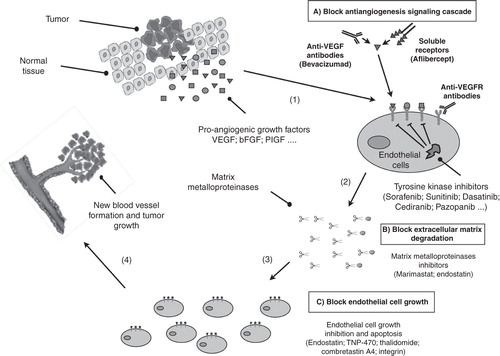Figures & data
Figure 1. Main anti-angiogenic strategies for prostate cancer treatment. Pro-angiogenic factors (VEGF, bFGF …) are synthesized inside tumor cells and secreted into the surrounding tissue where they bind to specific receptors located on the outer surface of the endothelial cells (1). The binding of pro-angiogenic factors to its specific receptor, activate endothelial cells, which produce matrix metalloproteinases, a class of enzymes that break down the extracellular matrix allowing the migration of endothelial cells (2). As they migrate into the surrounding tissue, activated endothelial cells begin to divide (3) and organize into a network of new blood vessels (4). Angiogenesis plays a role in prostate cancer progression providing a rationale to test anti-angiogenesis inhibitors in prostate cancer patients. These inhibitors fall into different categories, depending on their mechanism of action. Some inhibit the anti-angiogenic signaling cascade (A), others block the ability of endothelial cells to break down the extracellular matrix, whereas others inhibit endothelial cell growth directly (C).
